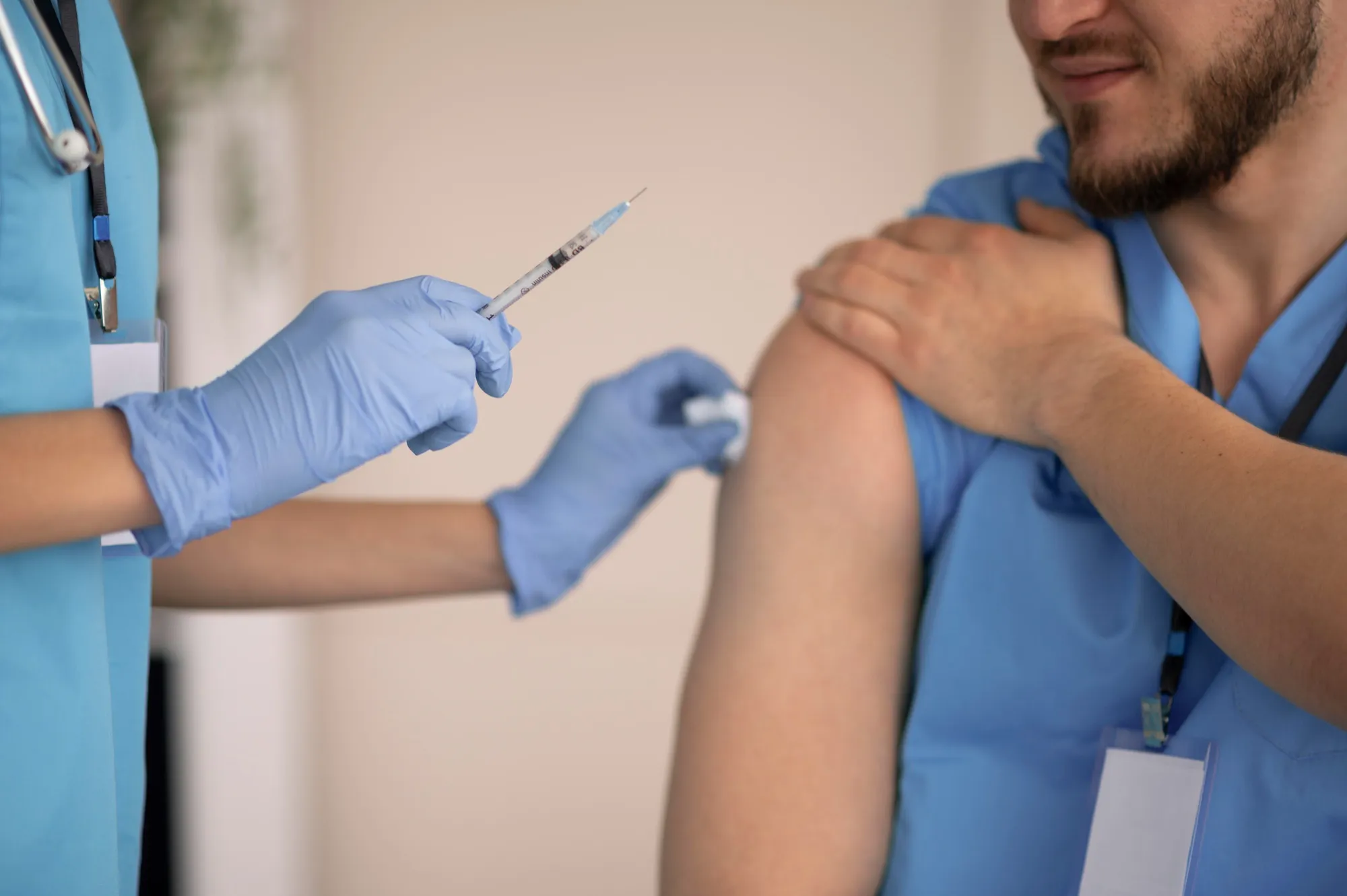Introduction
In a remarkable scientific breakthrough, a new Hepatitis B (HB) vaccine has been developed that effectively neutralizes the virus even in the presence of vaccine-escape mutations (VEMs). Published in “Uirusu,” the research details how a novel vaccine containing large-HBsAg could potentially compensate for the current vaccine’s deficiencies. This article dissects the study’s findings, explores the implications for global healthcare, and evaluates the prospects of the new vaccine in combatting Hepatitis B.
The Study: An Overview
The research, spearheaded by Takanobu Kato from the Department of Virology II, National Institute of Infectious Diseases, Tokyo, and Hirofumi Akari from the Center for the Evolutionary Origins of Human Behavior, Kyoto University, employed a nonhuman primate model to investigate the efficacy of the new vaccine. Their work, documented under DOI: 10.2222/jsv.72.149, involves the comparison of yeast-derived large-HBsAg coupled with an adjuvant to the traditional small-HBsAg vaccine used worldwide [1].
Current Hepatitis B Vaccine and Its Shortcomings
For years, the standard HB vaccine, which uses yeast-derived small-HBsAg, has been recognized as potent and safe. Nevertheless, it struggles to neutralize HBV strains that have developed specific amino acid polymorphisms – the so-called VEMs. These mutations allow the virus to bypass the immune protection granted by the existing vaccine, raising public health concerns.
The Rise of Vaccine-Escape Mutations
VEMs pose a significant threat to the effectiveness of current Hepatitis B vaccination programs. Instances of VEMs have been increasingly reported in the scientific literature, drawing attention to the need for an updated vaccine that can address this emerging challenge [2].
The Novel Hepatitis B vaccine: Large-HBsAg
The study’s focus is on large-HBsAg, a protein that constitutes a larger portion of the HBV surface antigen than the component used in the current vaccine. By using large-HBsAg, the novel vaccine aims to elicit a broader antibody response, specifically targeting the preS1 region, which is significant for viral attachment and entry into hepatocytes [3].
Efficacy against VEMs
The research findings are promising: antibodies induced by the large-HBsAg vaccine neutralized HBV with VEMs, a feat the current vaccine could not achieve. The neutralization levels were akin to those obtained against the wild-type virus. This suggests that the new vaccine formulation is capable of bridging the immunity gap when facing HBV strains that conventionally evade vaccination.
Implications for Broad-Spectrum HBV Neutralization
Differences in HBV genotypes’ neutralization by induced antibodies point towards the benefit of the large-HBsAg vaccine in generating a more comprehensive immune response. Additionally, utilizing both the novel vaccine and the existing one might induce antibodies with the capacity to neutralize a wider array of HBV strains, including those with VEMs [4].
Rhesus Macaques as a Model
The study used rhesus macaques to conduct research, a primate model that serves as a reliable surrogate for human responses to vaccination. These primates share close genetic similarities with humans, making them an invaluable asset in vaccine efficacy testing [5].
Large-HBsAg: Production and Clinical Translation
The large-HBsAg used in the study was derived from Saccharomyces cerevisiae, more commonly known as baker’s yeast, a well-established system for producing recombinant proteins for vaccines. The adjuvant combination and the novel antigen’s administration were carefully optimized to elicit the desired immune response.
A New Hope in Hepatitis B Prevention
The development of this new vaccine represents a significant milestone in the fight against Hepatitis B, particularly in regions where the virus is highly prevalent. If the vaccine performs well in human trials, it could redefine HBV immunization strategies and considerably lower the burden of this disease globally.
Challenges Ahead
Despite the positive results, transitioning from nonhuman primates to human trials involves many challenges. The scalability of production, safety profile in different populations, and cost-effectiveness for widespread use are some of the hurdles that need to be addressed before the vaccine can be made available to the public.
Conclusion
This study opens the door to a new era in the prevention of Hepatitis B, providing a ray of hope for a universal vaccine that overcomes the limitations brought by VEMs. As the global healthcare community anticipates the translation of this research into a practical solution, the paper by Kato et al. stands as a remarkable stride towards eradicating the Hepatitis B virus.
References
[1] Kato, T., & Akari, H. (2023). Neutralization of hepatitis B virus with vaccine-escape mutations by novel hepatitis B vaccine with large-HBs antigen. Uirusu, 72(2), 149-158. https://doi.org/10.2222/jsv.72.149
[2] Carman, W. F., et al. “Vaccine-induced escape mutant of hepatitis B virus.” The Lancet, 1990.
[3] Ito, K., et al. “Enhanced Immunogenicity of the PreS Region of Hepatitis B Surface Antigen.” Science, 1986.
[4] Zuckerman, A. J. “Effect of hepatitis B virus mutants on efficacy of vaccination.” The Lancet, 2000.
[5] Prince, A. M., et al. “Hepatitis B virus infection in cultured human lymphoblastoid cells.” Science, 1978.
[6] Valenzuela, P., et al. “Synthesis and assembly of hepatitis B virus surface antigen particles in yeast.” Nature, 1982.
Keywords
1. Novel Hepatitis B Vaccine
2. Large-HBsAg Vaccine
3. Vaccine-Escape Mutations
4. Hepatitis B Virus Neutralization
5. Effective HBV Immunization
